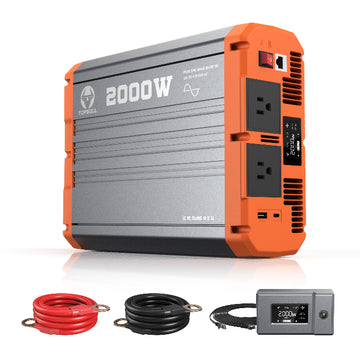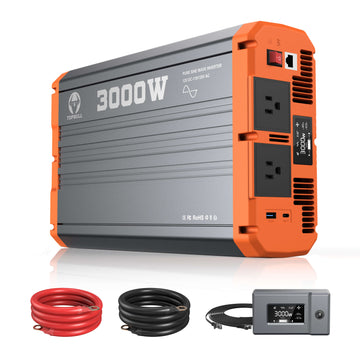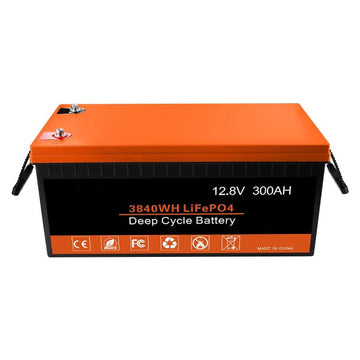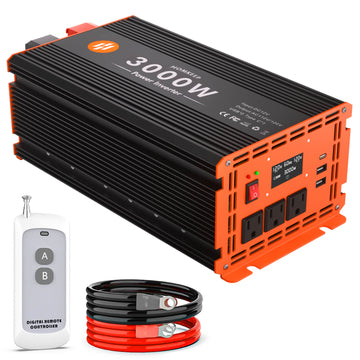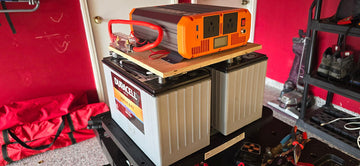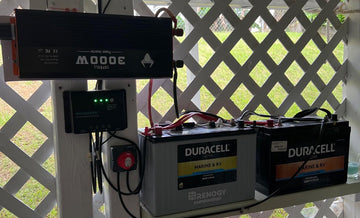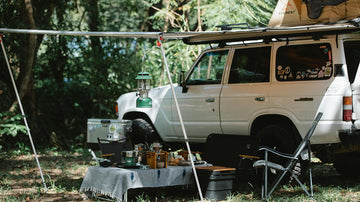Hurricane season power outages, aging grid failures, and widening peak-to-valley price differentials ...... According to SEIA (Solar Energy Industries Association of America), the demand for home backup power across the United States is growing at an annual rate of 22%. Equipped with inverters and batteries can not only protect the basic life during power outages, with solar systems can also realize energy independence, some states (such as California) TOU rate policy can save more than 40% of the electricity bill. In this article, we'll explain how to choose the best inverter and battery for your home and help you make an informed purchasing decision.
Locating Home Power Needs
Before purchasing an inverter and batteries, it is important to first identify your power needs. This includes determining the power of key appliances in your home, as well as the expected standby time. Generally speaking, an average household has basic requirements for securing power for devices such as lighting, fans, fridges and routers, while some special households may also need to secure high-power electrical devices such as air conditioners and water heaters. Accurately locating the demand helps to choose inverters and battery systems with appropriate capacity, avoiding waste and embarrassment of insufficient usage.
Home Electricity Audit Checklist
Mandatory equipment: double-door fridge (350W), LED light strings (15W x 8), router (40W) → Total load is about 570W
Optional equipment: medical instruments (need to be marked separately), window air-conditioner (1200W), home theater (300W)
Tool Recommendation: Use the [Home Energy Calculator] to accurately estimate the demand.
Scenario Adaptation Program
Hurricane Zone Emergency: portable inverter + AGM battery, anti-leakage design to cope with humid environment.
Peak and valley tariff arbitrage: smart inverter + high cycle Li-ion battery, automatic energy storage during low price hours.
Off-grid residential: hybrid inverter/standalone inverter + solar + long-cycle battery, suitable for power supply in remote areas.
Budget range planning
| Budget range | Core Configuration | Applicable Scenarios |
| $500-$800 | 800W inverter + 100Ah lead-acid battery | Short-term emergency, low-power equipment |
| $2000-$5000 | 4000W inverter + 200Ah lithium battery | Whole house key equipment support |
| $8000+ | 7000W Hybrid Inverter + Tesla Powerwall | New energy system compatibility |
Core Elements of Inverter Purchase
Capacity Matching
The inverter capacity should be slightly larger than the sum of the maximum power of the household starting at the same time to prevent momentary overload.
Waveform Type
Pure sine wave inverters produce high quality output power and are suitable for all sensitive appliances, while modified sine wave inverters are less expensive but may affect the performance of the equipment.
Efficiency and Stability
Highly efficient inverters reduce energy loss and extend battery life. Choose well-known brands and quality-certified products to ensure stable operation.
Protection Functions
Multiple protections such as overload, short circuit, and over-temperature are provided to ensure the safety of equipment and electricity consumption.
Compatibility and Expansion
supports different voltages and connection methods, which is convenient for future expansion and upgrading.
Key Factors to Consider When Choosing a Home Battery
Battery Types
Lead-acid batteries: lower cost, mature technology, but large, heavy, shorter life span (generally 3-5 years) and require regular maintenance (e.g., replenishing electrolyte).
Lithium batteries: small size, light weight, long life (generally more than 8-10 years), simple maintenance, but higher prices, better safety (need to choose products with safety certification).
Capacity and duration
Choose the capacity according to the household's electrical load and desired standby time. The higher the capacity, the longer the power supply time in case of power outage, but the price and size increase as well.
Cycle Life
refers to the number of times a battery can be fully charged and discharged. Longer cycle life means a more durable battery and lower long-term cost. Lithium iron phosphate batteries have a longer cycle life compared to traditional lead-acid, usually between 3,000 and 8,000 cycles
Safety Performance
Batteries should have overcharge, overdischarge, short-circuit protection and fireproof and explosion-proof design to ensure safety and reliability during use.
Maintenance Requirements
Lead-acid batteries require regular maintenance, while lithium batteries are generally maintenance-free, and it is more convenient to choose batteries with simple maintenance for family use.
Charging efficiency and self-discharge rate
Batteries with high charging efficiency can restore power faster, and low self-discharge rate will result in less power loss when not in use for a long time.
Environmentally friendly
Some battery materials are not environmentally friendly, so you should pay attention to whether they comply with environmental regulations to avoid pollution.
Cost and Value
Consider the purchase cost, service life and maintenance costs to choose the type of battery that best suits your budget and needs.
How to match inverters and batteries for best results?
Choosing the right mix of inverters and batteries can improve system efficiency, extend equipment life, and optimize energy utilization. Below are the key matching principles and practical solutions:
Inverter type selection: decision based on demand scenarios
| Inverter type | Applicable Scenarios |
| Hybrid inverter | Solar + storage + grid-connected/off-grid |
| Off-grid inverter | Gridless areas, purely battery powered |
| Grid-tied inverter | Surplus power only, requires separate battery inverter |
Key Matching Principle:
- Solar users prioritize hybrid inverters (e.g. Sol-Ark 15K) that support seamless MPPT solar charging + battery + grid switching.
- Off-grid systems need to be matched with pure sine wave off-grid inverters (e.g. Topbull 3000W inverter) to ensure electrical compatibility.
Match the inverter power with the battery capacity
The output voltage of the battery and the input requirement of the inverter need to be the same, and at the same time, the battery capacity should be reasonably matched with the rated power of the inverter to ensure stable operation of the system.
Calculation formula: Battery capacity = Inverter power × Autonomous power supply hours ÷ Discharge depth
Example: 7.5kW inverter, need to support 4 hours, DOD=80%
Calculation: 7.5kW × 4h ÷ 0.8 = 37.5kWh → It is recommended to choose 40kWh battery pack.
Efficiency Synergy
The overall efficiency of the system is determined by the performance of both the inverter and the battery. The combination of an inverter (e.g. Sol-Ark) with an MPPT efficiency of over 97% and a Li-FePO4 battery with a charge/discharge efficiency of 95% results in an overall efficiency of up to 92%, which significantly reduces energy conversion losses. The synergy of high-efficiency components reduces long-term operating costs and avoids stressing the system due to frequent energy replenishment.
Protection Synergy
Protection complements efficiency through dynamic regulation. When the battery temperature exceeds 50°C, the inverter automatically reduces the charging and discharging power, balancing performance and safety; when the power level is below 20%, intelligent load management (e.g. Sol-Ark's LVD function) cuts off non-critical equipment to prevent deep over-discharge. This protection mechanism avoids risks while maintaining continuous power supply to critical loads, ensuring double optimization of system stability and equipment life.
Combined Program Scenario Recommendation
1. Separate Power Supply for Small Households
Program Configuration: Small power demand, it is recommended to use 2000W pure sine wave inverter with 150Ah Li-ion battery, which can satisfy the daily lighting and the basic power consumption of home appliances.
Recommended products:
-
Inverter: Topbull 2000W inverter - pure sine wave output, high efficiency, compact size, suitable for small house.
- Battery: Eco worthy 150Ah lithium battery - high safety, long life, low maintenance.
- This combination is suitable to meet the needs of basic lighting and light load electrical appliances, economical and stable.

2. Medium household backup power
Configuration: Need to protect fridge, air conditioner, washing machine, etc.
Recommended 5kW inverter equipped with more than 200Ah Li-ion batteries or high-performance lead-acid batteries combo
Recommended products:
- Inverter: Sol-Ark 5K Hybrid Inverter - MPPT efficiency of more than 97%, support a variety of protection functions and expandability.
- Lithium Battery: Lithium Iron Phosphate 200Ah - High safety standards and long cycle life.
These solutions are suitable for guaranteeing continuous power supply for medium-power devices such as fridges, air conditioners, etc., taking into account performance and cost-effectiveness.
3. Large households or high power demand scenarios
Configuration: When multiple high power appliances are working at the same time, it is recommended to use inverters of 10kVA and above, paired with a lithium battery system with larger capacity and support for parallel expansion.
Recommended products:
- Inverter: Emerson 10kW pure sine wave inverter - high efficiency and stability, supports parallel expansion, suitable for high power family needs.
- Lithium battery: Panasonic LFP lithium battery combination system (supports parallel expansion) - meets the large-capacity energy storage, high efficiency and safety, suitable for simultaneous operation of multiple devices.
Purchasing Precautions and Common Misconceptions
1. The temptation of low prices should not be blindly
Low-priced products are often difficult to guarantee the quality, and there may be safety hazards, resulting in poor experience and even damage to the appliance. Purchase should take into account the quality and cost-effective, to avoid losing a lot of money.
2. Neglect to calculate the capacity
Insufficient capacity will affect the stability of power supply, while too large is a waste of money and space. The system should be reasonably configured according to the actual power load and standby time to ensure efficient operation.
3. Neglecting after-sales support
It is important to repair and replace the inverter and battery equipment in time when they have problems. Choosing a brand with good after-sales service can reduce the trouble of using the system in the future.
4. High risk of self-installation
Inverter and battery installation involves electrical safety, and non-professional installation is prone to errors and safety hazards. It is recommended to have professional construction to ensure the safety and reliability of the equipment.
FAQs about Inverters and Batteries
Which is better for home use, lithium batteries or lead acid batteries?
For home energy storage scenarios, lithium batteries (especially lithium iron phosphate batteries) are the better choice. Although their initial investment is higher, their long cycle life of 3000-6000 cycles (about 10 years of service life) and maintenance-free features significantly reduce long-term costs. In addition, lithium batteries are about 50% smaller and lighter than lead-acid batteries, making them easier to install flexibly. Although lead-acid batteries have a low initial cost, they are bulky, require regular addition of electrolyte, and have a lifespan of only 300-500 cycles, making them suitable for temporary scenarios with limited budgets or low-frequency use. If families are looking for long-term reliability, space utilization and low maintenance costs, lithium batteries are more cost-effective overall.
What is the impact of insufficient inverter power?
Insufficient inverter power will cause the system to be unable to support all appliances running at the same time, thus triggering the overload protection mechanism. For example, when a family uses air conditioner (3kW), electric kettle (2kW) and microwave oven (1.5kW) at the same time, if the rated power of the inverter is only 5kW, it may automatically shut down due to the instantaneous power exceeding the rated value (6.5kW), resulting in a localized power failure. Long-term overloading also accelerates the aging of the inverter's internal components (e.g. IGBT modules), shortening the equipment's life
Can I connect the inverter to solar panels?
Some inverters (e.g. Sol-Ark, Victron hybrid inverters) have built-in MPPT solar controllers, which can be directly connected to PV panels to realize the three-in-one function of “PV + storage + grid”. These inverters can dynamically adjust the priority of PV input to maximize the self-generation and self-consumption rate.
How do I maintain the inverter and battery?
Maintenance of Li-ion battery is relatively simple, mainly need to pay attention to avoid long-term in a fully charged state (recommended SOC ≤ 80%), quarterly through the BMS to detect the battery health status, and to ensure that the installation environment is well ventilated.
As for inverter maintenance, the cooling fan should be cleaned up every 6 months to ensure smooth ventilation, and the official firmware should be upgraded in time to optimize the performance and repair the security holes. In addition, at extreme temperatures (e.g. >45°C in summer), the inverter's operating temperature needs to be monitored, and loads need to be reduced if necessary to avoid derating.
How to choose between off-grid and grid-connected systems?
Off-grid systems are suitable for remote areas without grid access and require high-capacity batteries (e.g., 48V/40kWh or more) to meet all-weather power needs, but at a higher cost. Grid-connected systems can save electricity costs by bringing surplus power to the grid, but they depend on the stability of the grid and cannot supply electricity if the grid fails. A hybrid system combines the advantages of both, running on the grid to optimize electricity costs during normal times and automatically switching to off-grid mode in the event of a grid failure, making it suitable for most households. The choice needs to be balanced against reliability, affordability and installation environment.
Conclusion
Selecting the right home inverter and battery is a key step to ensure the stability of home electricity consumption. By clarifying your needs, rationally purchasing and scientifically matching, you can have a stable, efficient and safe backup power system. We hope that the suggestions in this article can help you easily pick the most suitable products to guard your home electricity without worry.

